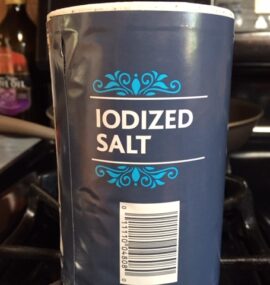Cutting salt intake may prevent high blood pressure, cardiovascular disease
How might you do that?
In 1998, science writer Gary Taubes published a lengthy in article in Science in which he reviewed the academic controversy over the ability of lower salt (actually sodium) intake to meaningfully lower blood pressure. In the end, he quoted one of the scientists involved in the salt wars, “The problem with this field is that people have chosen sides.” In other words, if a new study supports my existing position, I’ll probably like the new study. On the other hand, if a new doesn’t support my position, I probably won’t like it. Worth remembering: Taubes stated that 80 percent of the salt we eat comes from processed foods, often with low nutritional value.
Part of the salt controversy arises from important details in study design. A recent systematic review and meta-analysis of 133 randomized trials claims to have addressed some of these shortcomings. For example, all included studies determined sodium intake from the amount of sodium voided in urine over 24-hour periods. Overall, this new review found that higher intake of dietary sodium predicted significantly reduced systolic (-4.26 mm Hg) and diastolic (-2.07 mm Hg) blood pressure. Each 2,925 mg decline in daily sodium consumption predicted 1.10 and 0.33 mm Hg declines in systolic and diastolic blood pressure, respectively. The observed reductions were greater in older people, non-whites, and people with higher baseline systolic blood pressure levels. Sodium reduction reduced blood pressure in male and female adults, all ethnic groups studied, and in both hypertensive and normotensive participants
High levels of sodium intake (mainly as table salt) predict increased risk of cardiovascular disease and premature death. For years, health authorities have advised Americans to reduce their salt intake. Salt substitutes containing potassium and sodium appear to be practical and effective ways to reduce sodium intake. Yet, concerns exist about increased dietary potassium.
Researchers in Australia and China conducted a large-scale, five-year experimental study with 20,995 Chinese villagers in the Salt Substitute and Stroke Study. Participants had an average age of 65 years and had a history of stroke or poorly controlled blood pressure. Participants in the salt substitute group were given 20 grams per person per day of salt substitute (75 percent sodium chloride and 25 percent potassium chloride) use for their cooking and food preservation requirements. Members of the control group were asked to continue use regular salt.
After an average follow-up of 4.7 years, participants in the salt substitute group had significant 14 and 13 percent fewer new cases of stroke and major cardiovascular events, respectively, compared to the regular salt group. In addition, participants in the salt substitute group died at a 12 percent lower rate death than those in the regular salt group. Systolic blood pressure declined by 3.3 mm Hg more in the salt substitute group than in the regular salt group. Serious events attributable to increased dietary potassium were not significantly different for the salt substitute and regular salt groups. Overall, replacing regular salt with the salt substitute led to reduced risks of stroke, major cardiovascular events, and premature death. Plus, the additional dietary potassium did not increase adverse health outcomes. Of note, the study participants likely consumed much more salt than most Americans.
The Chinese and American researchers mentioned above used data from the same 20,995 rural Chinese participants with an average age of 65 years in the Salt Substitute and Stroke Study to see if replacing regular salt with salt substitute over a five-year period would improve quality of life and reduce health care costs. Members of the salt substitute group increased their quality of life years (that is, time without disability) by about 8 months. The salt substitute intervention had a 95 percent probability of being cost-saving (that is, saving the health care system money) and virtually 100 percent probability of being cost-effective (that is, being worth the expense). Replacing regular salt with salt substitute likely saved money for the health care system, improved quality of life, and reduced risk of stroke.
The American Heart Association and other health authorities in the US recommend limiting salt intake to one teaspoon per day. That’s equivalent to 5,845 mg of table salt or 2,300 mg of sodium. Getting that down to 1,500 mg of sodium per day would be even better. The average American consumes 3,400 mg of sodium per day. The concern about salt (actually the sodium in table salt) comes from studies that link higher salt consumption to higher systolic and diastolic blood pressure. Higher blood pressure predicts increased risk of stroke, heart failure, and kidney disease. According to the American Heart Association, 70 percent of our daily sodium arrives in packaged foods, 15 percent occurs naturally, and 10 percent comes from salting foods at home. Thus, limiting consumption of processed foods, which would help you eat better in any event, or using a salt salt substitute if you heavily salt your food, could reduce your daily sodium intake to levels that wouldn’t increase your blood pressure.







